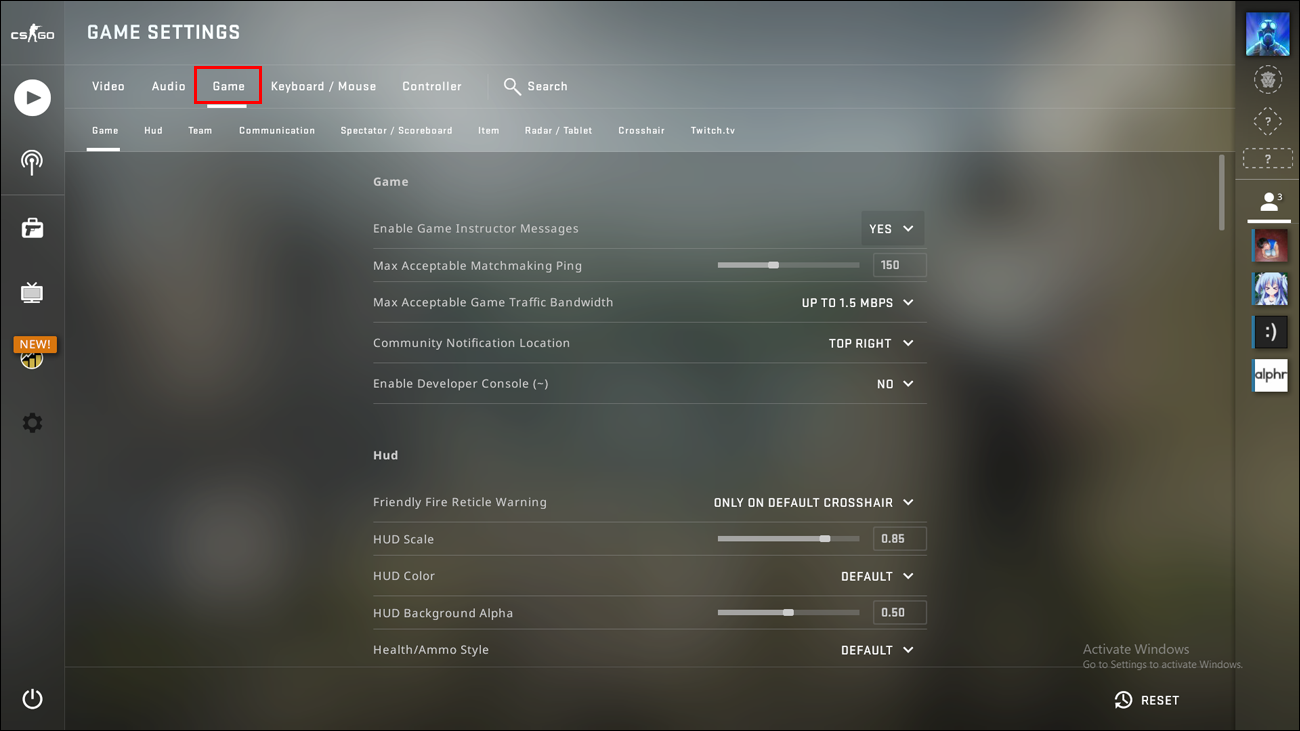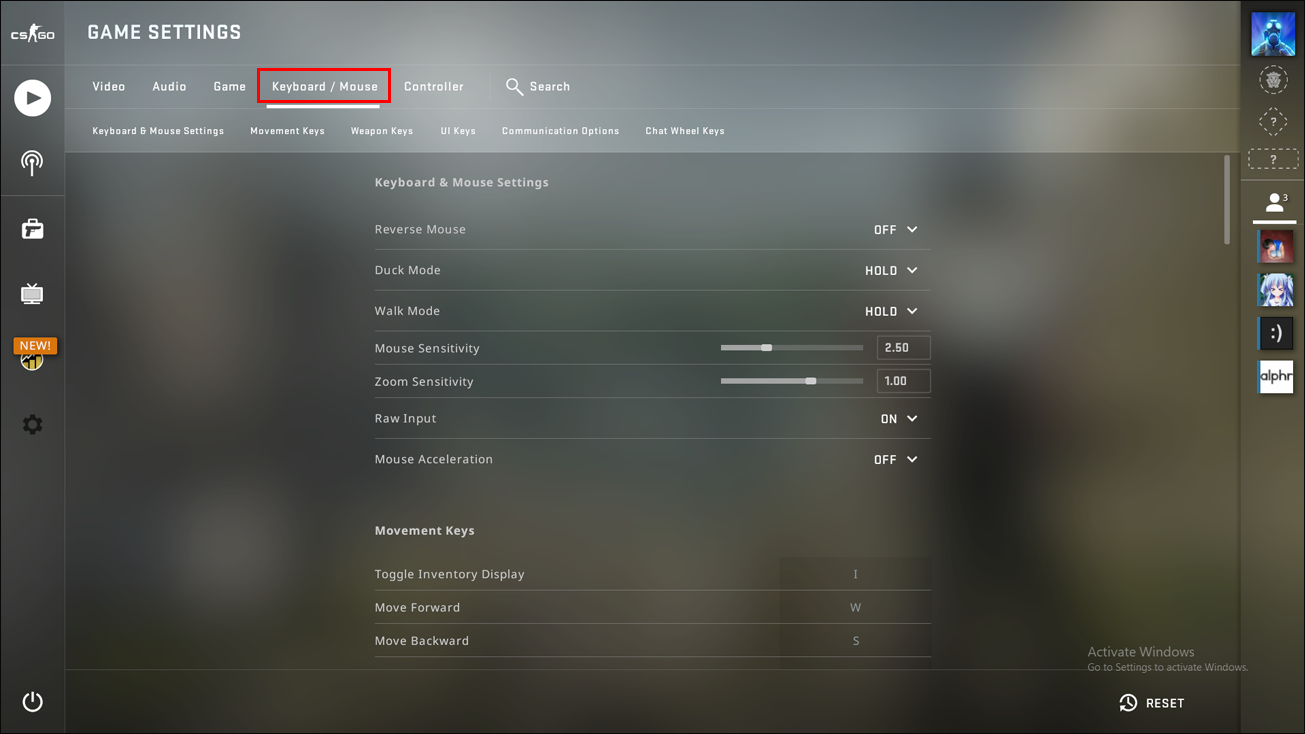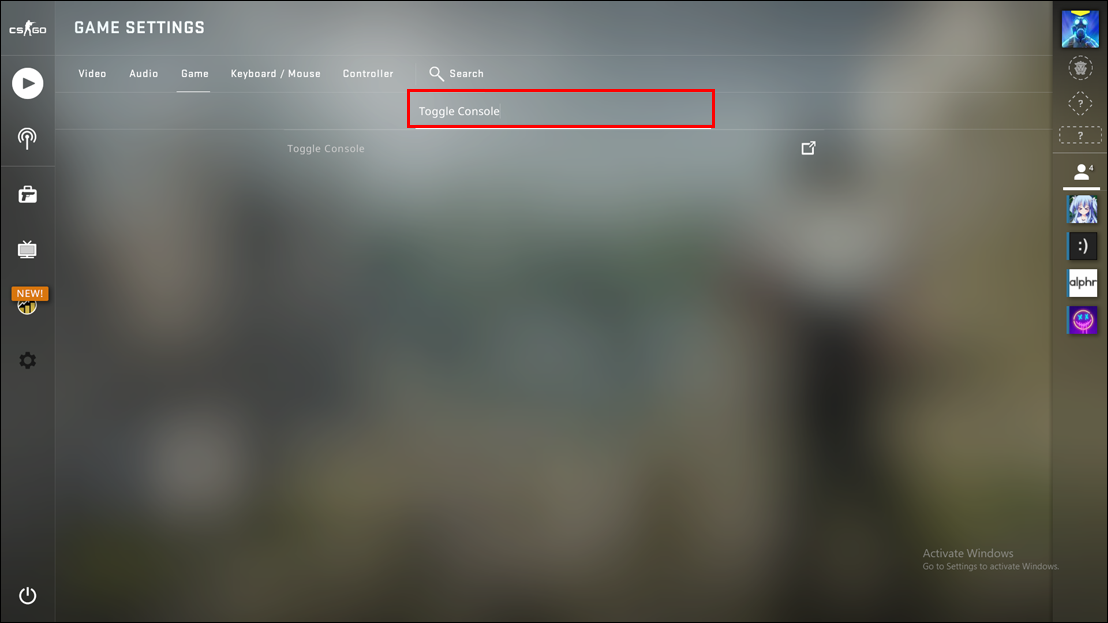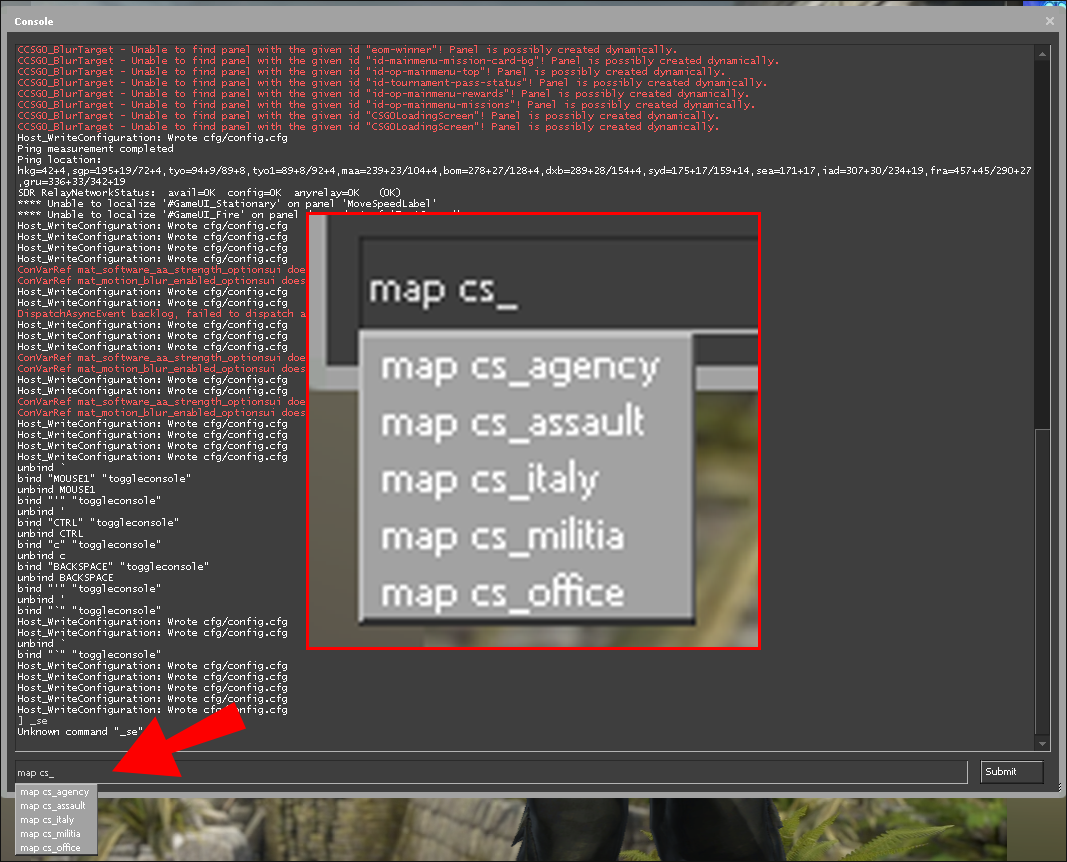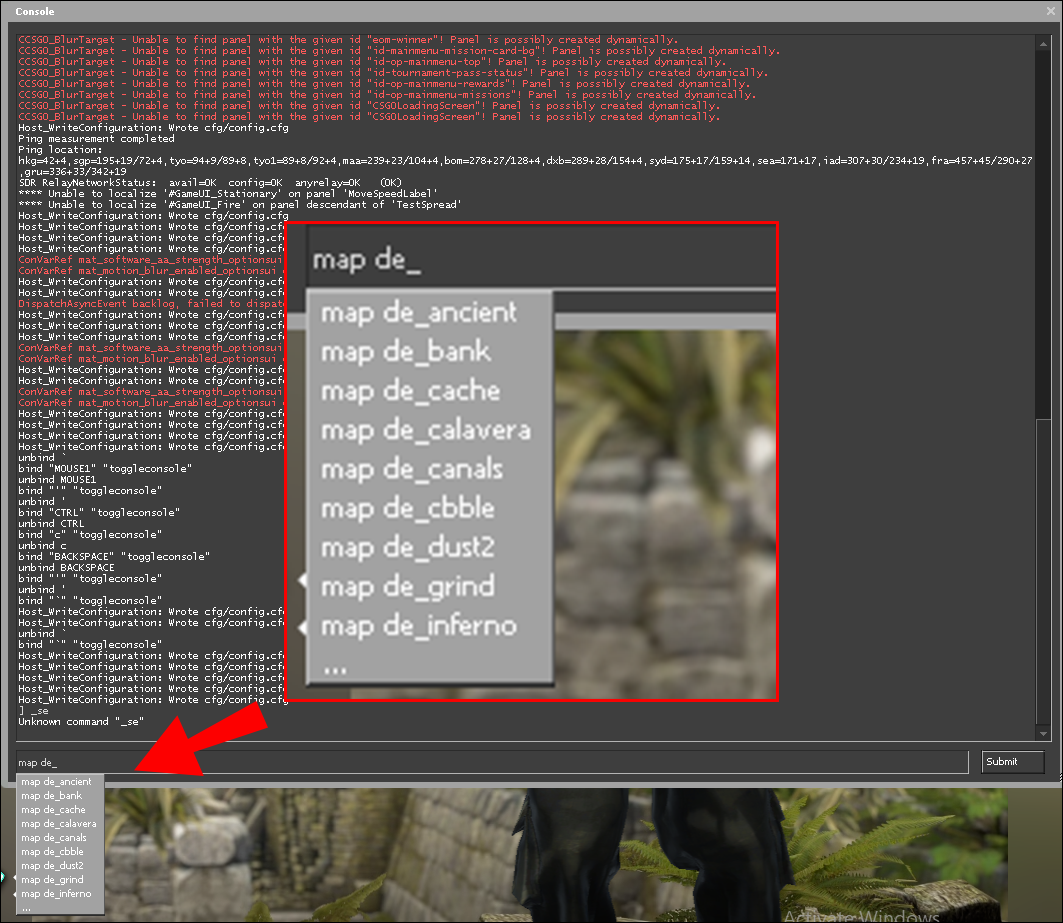There are multiple ways to customize your CS: GO experience by opening CS: GO maps for different purposes. For example, you may want to open maps for training or offline play. Maybe you would even like to customize your gameplay further by using the developer console. If that’s the case, this guide covers different tweaks for CS: GO maps for Microsoft Windows, macOS, and Linux.
How to Open the Map in CSGO
Follow these steps to open CS: GO maps. You can skip to Step 2 if you have already unlocked the developer console.
Step 1 – Enable the Developer Console
To use the console, you must enable it first. Follow these steps to enable the console:
- Launch CS: GO and go to the “Game Settings.”
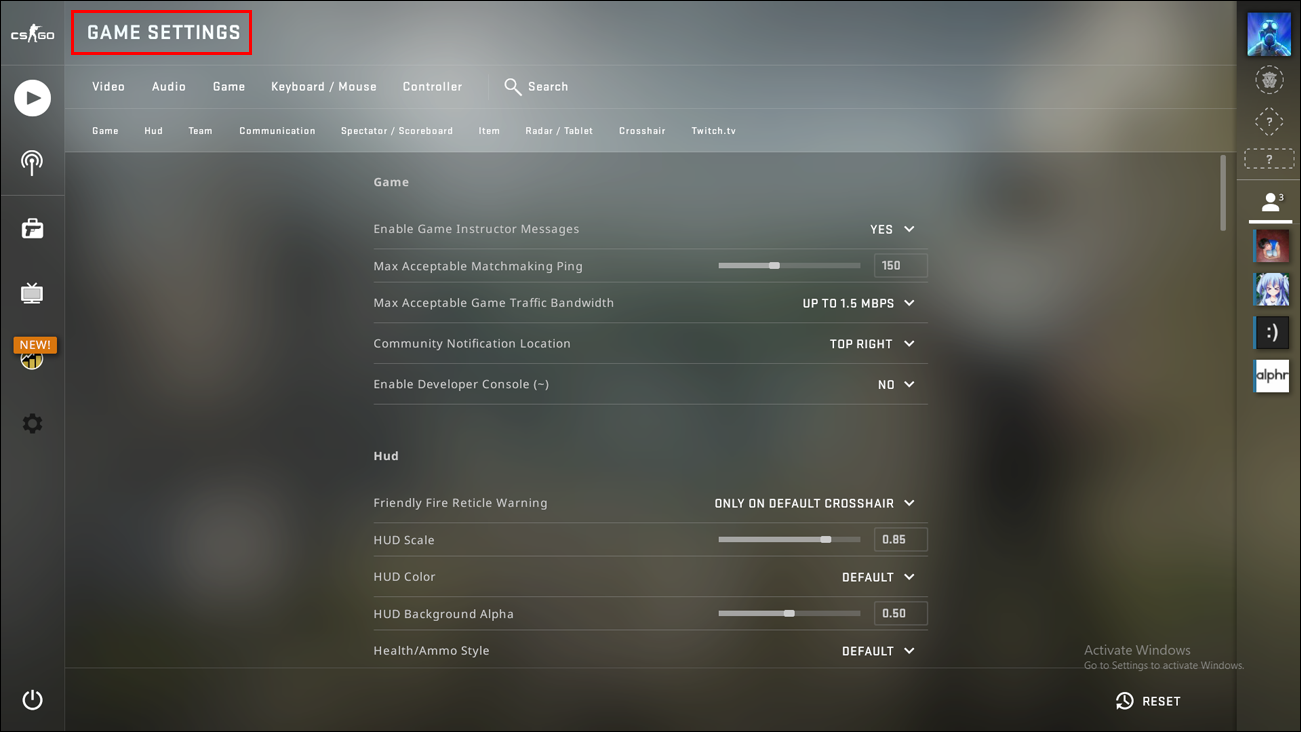
- Head over to the Game tab.

- Turn on “Enable Developer Console (~)” by selecting “Yes.” You will find this at the top.

- Now go to the “Keyboard and Mouse” settings.

- Press the “`” or tilde key to open your console. Note that the keys place can change from language to language.

- Alternatively, type “
Toggle Console” in the search bar at the top of the screen. Click on the result to bind your preferred key.
For reference, you will find “`” below the Esc key for most standard English keyboards.
Step 2 – Give Commands to the Developer Console
The developer console has its own “language.” So now you can load maps using the developer console through the “map” command such as “map de_dust2” without the quotations. Some CS: GO console commands are valid for other Valve games since CS: GO is based on the source engine.
This developer console has an autocomplete function. For example, if you type “map de_” in the console, you can obtain a list of all “de_” maps. More specifically, the maps are classified as follows:
- Maps whose names end with “_se” are modified versions of the base map for competitive play.
- Maps that start with “cs_” classify as hostage maps.

- Maps that begin with “de_” are demolition and defuse maps.

- Maps that start with “gd_” are the guardian maps.

- Maps that begin with “ar_” are arms race maps.

How to Open Empty Map CS: GO?
To open an empty map in CS: GO, you must create an empty game first. To do this, check out the following steps:
- Open CS: GO and click on the “Play CS: GO” button at the top.

- Click on the “Official Matchmaking” option in this menu.

- Pick the “Practice With Bots” option.

- Now you can select the “No Bots” option at the top-right.

- If you don’t want anyone to join, select “Friends Need Invite” at the bottom-left.

- Press Go to open the empty map.

How to Open the Training Map CS: GO
Though you can try the official CS: GO training course, it may not be enough for you. If that’s the case, check out the following sub-sections to use other training maps.
Train Using Only the Dev. Console
To open a map for training, you should first enable the developer console and create an empty game, as explained in the previous sub-section.
Once those steps are completed, you can copy and paste the following console commands in your session:
sv_cheats 1; mp_limitteams 0; mp_autoteambalance 0; mp_roundtime 60; mp_roundtime_defuse 60; mp_maxmoney 60000; mp_startmoney 60000; mp_buytime 9999; mp_buy_anywhere 1; mp_freezetime 0; ammo_grenade_limit_total 5; sv_infinite_ammo 1; mp_warmup_end;
It is necessary to type “;” to use more than one command at once. Using these commands after loading the empty map will get you the following:
- Enable cheats.
- No team member limit or team auto-balance.
- A round time set to 60 minutes.
- Start your game with $60,000.
- Remove freeze time at the beginning of rounds.
- “Unlimited” buy time from anywhere.
- Infinite ammo without reloading.
- Receive all five grenades at once.
Since the commands are self-explanatory, you can look them up to throw other CS: GO commands into the mix by searching “CS: GO Console Commands” on the web.
Train Through Executing a .cfg File
It is also possible to create a .cfg file that contains the commands. You can execute this file using the developer console. To make the file, follow these steps for Windows:
- Create a Text file using Notepad or a similar app.

- Copy and paste the following commands into the file:
// Config for server
sv_cheats 1
mp_limitteams 0
mp_autoteambalance 0
mp_roundtime 60
mp_roundtime_defuse 60
mp_maxmoney 60000
mp_startmoney 60000
mp_buytime 9999
mp_buy_anywhere 1
mp_freezetime 0
ammo_grenade_limit_total 5
sv_infinite_ammo 1
mp_warmup_end
- Save the text file as “training.cfg”.

- Move the saved file to the following steam directory:
“Steam\steamapps\common\Counter-Strike Global Offensive\csgo\cfg”
- Start an empty or offline map.

- Open console and type “
exec training“.
Doing this will execute the commands of your newly created training.cfg file. It is possible to do this on a Steam Workshop map as well. You can also invite friends to a lobby like this. As for bots, their console commands are:
//bot_add_t//bot_add_ctbot_kickbot_stop 1bot_freeze 1
How to Open the Mini-Map CS: GO?
If your mini-map has disappeared, you can make it appear again by using the following command: cl_drawhud_force_radar 0
It is not possible to use the “drawradar” command anymore to draw out your radar. Use must use the “cl_drawhud_force_radar 0″ console command instead.
Improve Your Mini-Map
As an add-on, you can use the following commands to change and improve your mini-map experience:
cl_radar_always_centered 0; cl_radar_rotate “1”; cl_radar_scale 0.3; cl_radar_square_with_scoreboard “1”; cl_hud_radar_scale 1.15; cl_radar_icon_scale_min 1
These console commands will:
- Center your radar
- Increase the icon and radar size
- Render the whole map on your mini map
How to Open the Offline Map in CS:GO
Opening an Offline Map is essentially the same as opening empty maps. To open an offline map in CS: GO, you must create a session with bots only. To do this, check out the following steps:
- Start CS: GO and tap on the “Play CS: GO” button at the top.

- Click the “Official Matchmaking” option here.

- Pick the “Practice With Bots” option at the top-right.

- Select “Friends Need Invite” at the bottom-left.

- Click on “Go” to open the offline map.

Command to Pave Your Way Towards Proficiency
Using the proposed tools and methods, such as training and empty maps and console commands, is an excellent choice for new and returning players. These maps will keep your aim, recoil, reflex, pre-fire, and grenade skills sharp. They can also help improve teamwork by inviting friends over for productive sessions.
Which console command attracted your attention the most? What aspect of your gameplay are you looking to hone next? Let us know in the comment section below.
Disclaimer: Some pages on this site may include an affiliate link. This does not effect our editorial in any way.
